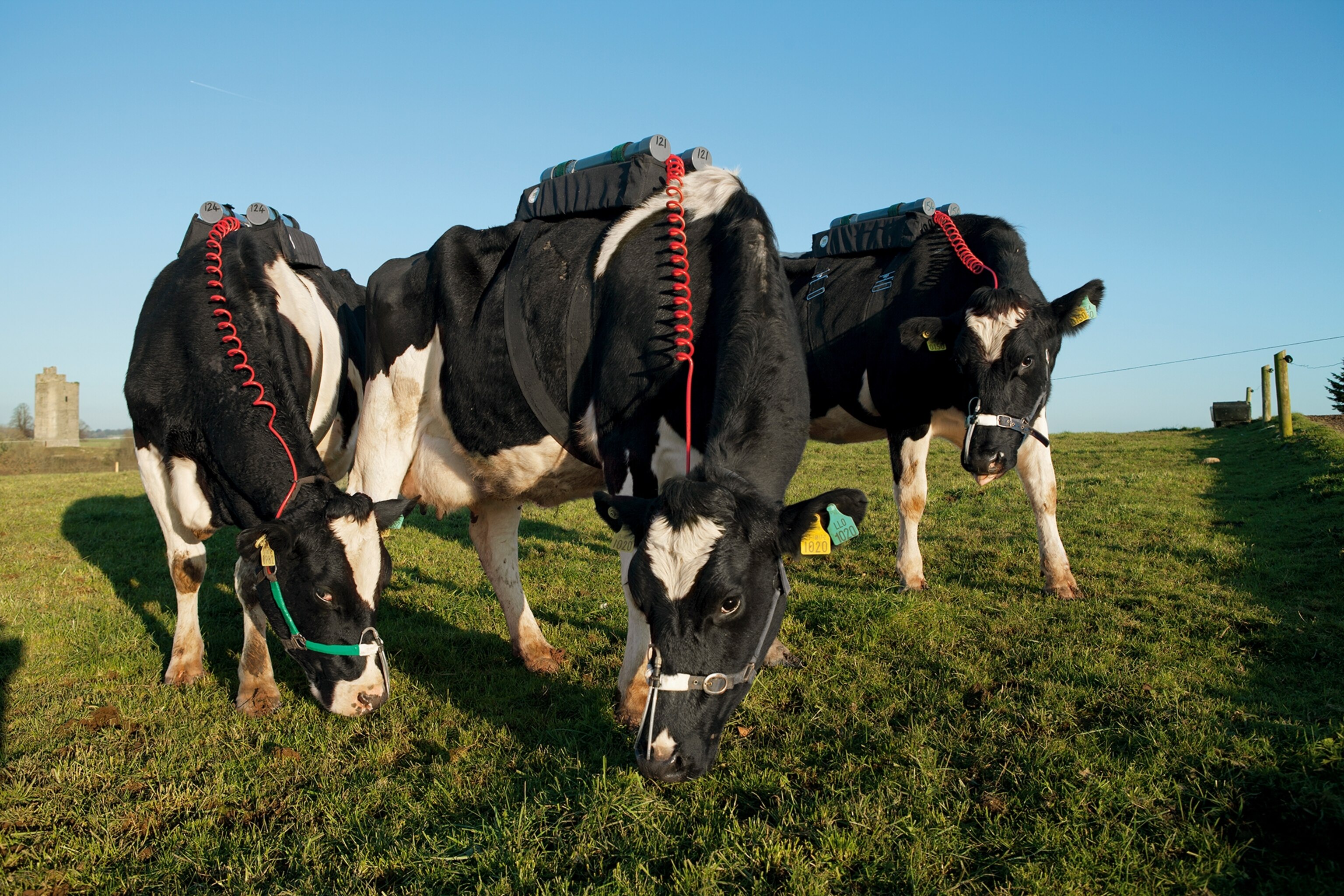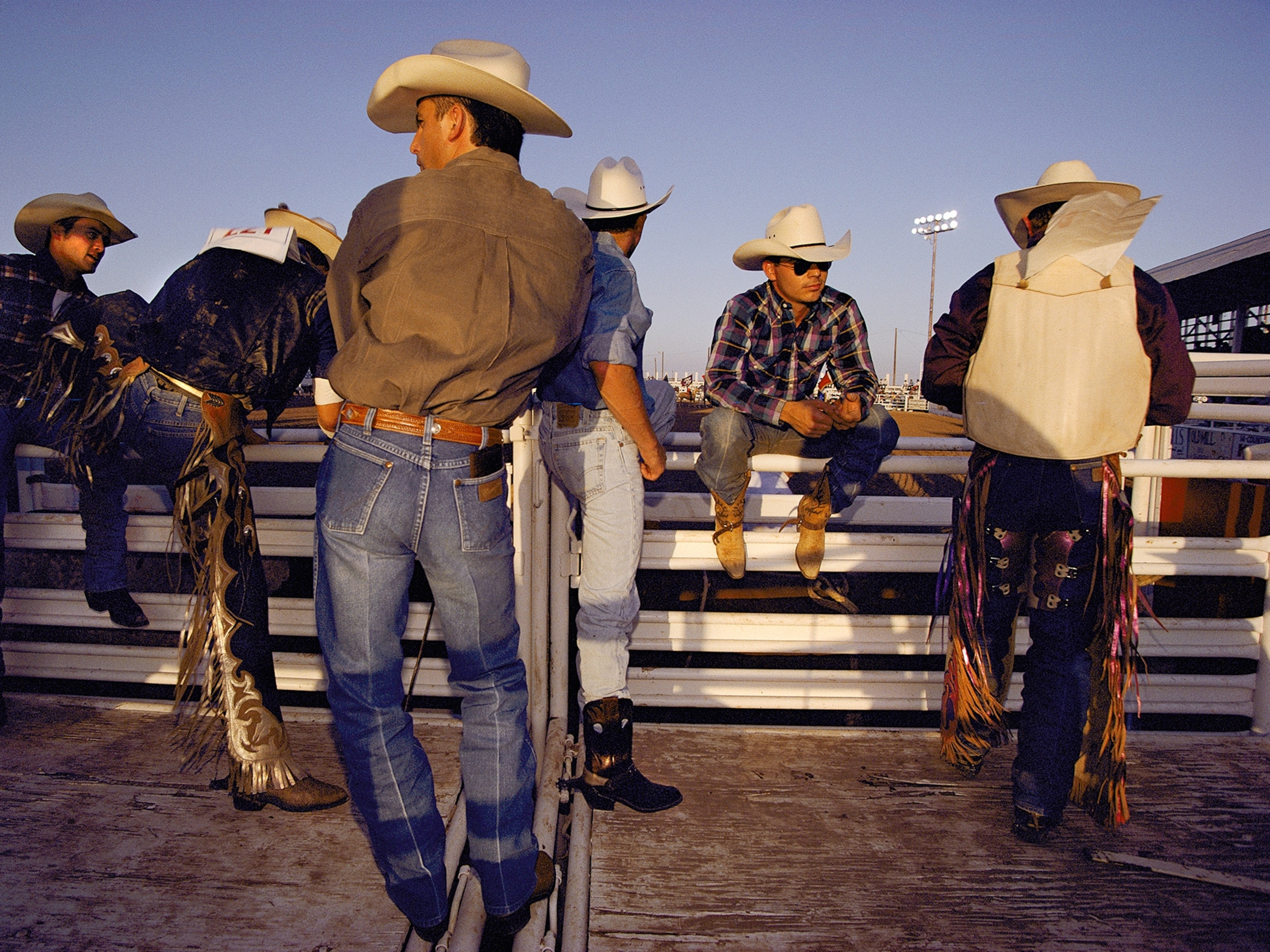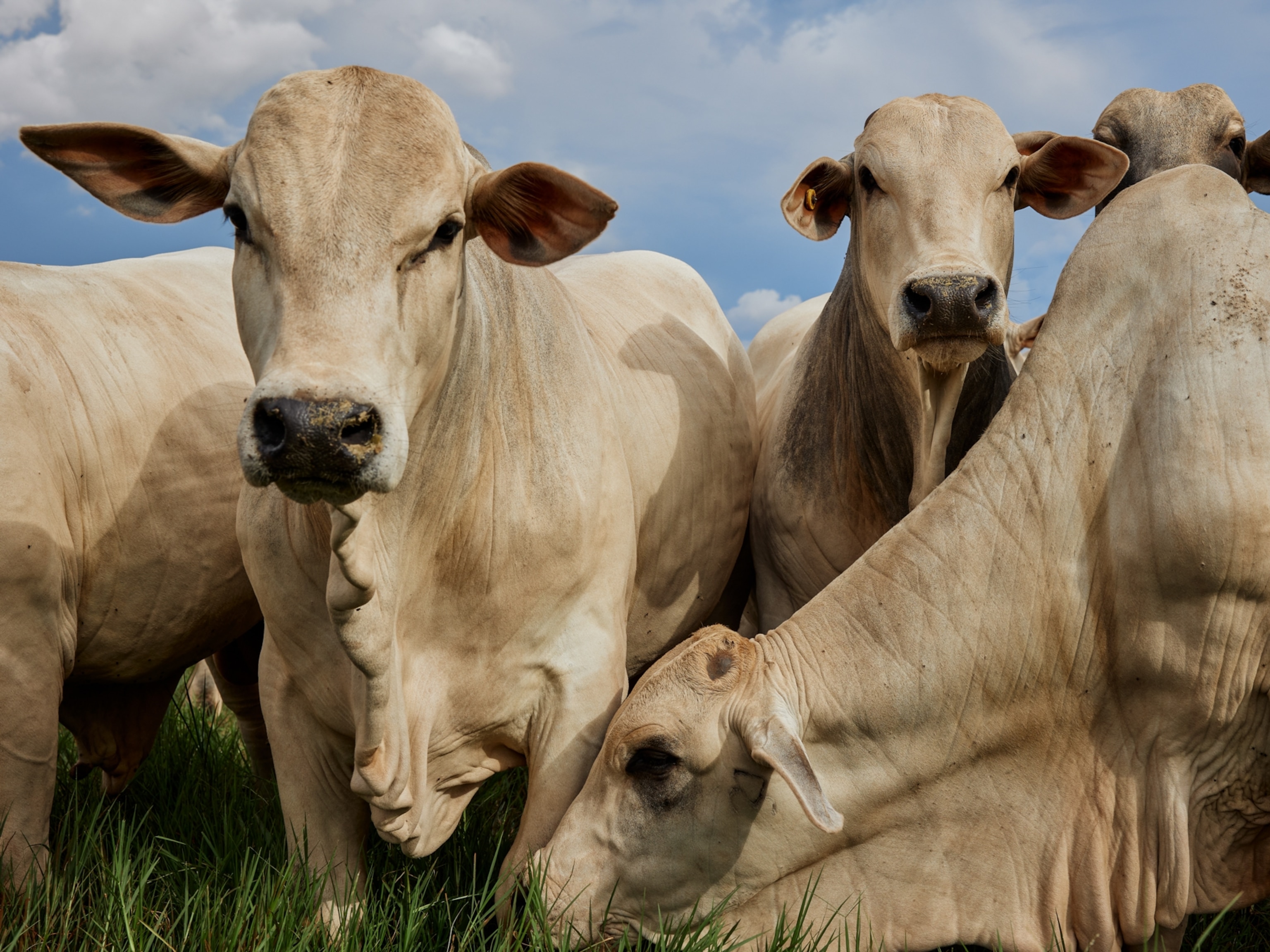
Can methane burps be bred out of cows?
A study of more than 1,000 cows throughout Europe found that the microbes in their guts responsible for methane are inherited.
Underneath the lazy demeanor of a cow is a complex digestive system that transforms grass into the complex carbohydrates cows need to live. A byproduct of that digestion is methane—a lot of methane—one of the most potent greenhouse gases found on Earth.
Though methane stays in the atmosphere for less time than carbon, it’s highly effective at trapping heat. The EPA estimates around 25 percent of methane in the U.S. comes from cows.
Reducing those methane emissions is a major goal for environmentalists trying to mitigate the impacts of climate change, and new research indicates that they may be able to achieve that goal by altering the genetic makeup of common cows.
Some microbes inside cows more actively contribute to producing methane than others. A new study in the journal Science Advances shows that many methane-producing microbes are inherited, and by selectively breeding cows without those inherited traits, scientists think they’re one step closer to engineering a more environmentally friendly cow.
It’s a prospect that makes scientists hopeful. Meat and dairy consumption have been on the rise for the past decade, and many countries are scrambling to feed growing populations while simultaneously reducing emissions.
What 1,000 European cows can tell us
In 2012 the European Union commissioned a team of more than 30 scientists to research the relationship between livestock and methane emissions.
They called their research project Ruminomics—ruminants are a category of animals like cows, buffalo, yaks, and sheep. The rumen is the first of four compartments found in a ruminant’s stomach, where grass is partially digested via fermentation before passing through the rest. Ninety-five percent of the excess methane is expelled via their burps.
It’s in the rumen that the methane production process begins. Bacteria produce hydrogen as they begin fermenting carbohydrates, and single-celled organisms called archaea combine that hydrogen with carbon dioxide to produce methane.
Scientists had suspected that a set of genes might be controlling this methane production, but it was unclear how they fit together.
You can think of it “like a triangle,” says study author John Wallace from the University of Aberdeen. “At the corners of the triangle you have three things: one is emissions, two is the rumen microbiome, and the third is the host animal’s genome. The aim of our study was to see how connected those were.”
They looked at Holstein cows on farms in the U.K. and Italy, as well as Nordic Red dairy cows in Sweden and Finland. Specialized tools were designed to collect samples by inserting a brass cylinder into a cow’s mouth and pulling fluid from the rumen where the scientists could see a pool of protozoa, fungi, bacteria, archaea, and DNA crucial to the experiment. Breath samples were also taken to measure how much methane cows were burping.
Of each cow’s core microbes in the rumen, Wallace says their results identified which microbes were passed down from one generation to the next. Certain microbes like the succinovibrionaceae were common in cows that produced less methane.
Greener pastures for greener cows
“Our idea now is that since we know these organisms are heritable and interconnected, this can be a target for breeding animals with improved milk yields, lower emissions, or other properties that people might want,” says Wallace. “If we could inoculate young animals with a low-methane microbiome, we have every reason to believe that will persist throughout life, which will lead to animals producing much less methane.”
In a place like California where there’s a target to reduce methane emissions by 40 percent, low-methane cows “could be part of the solution,” says Ermias Kebreab from the University of California Davis.
Kebreab said he was excited by the study’s results, and that it’s a good first step toward work that will still take years to practically execute. His own work has centered on how diet affects the amount of methane produced by cows. Last year he found that adding methane to their feed significantly reduces the emission.
(Learn more about how seaweed is being used in cow feed.)
Both Kebreab and Wallace said a big hurdle will be convincing farmers to let their cows be bred for low-emission traits, since farmers tend to select for money-making traits like milk production and size, but lower emissions wouldn’t have any direct financial benefit. In regions without emissions reduction targets, Kebreab said farmers would need additional economic incentive.
Wallace says selective breeding of lower-methane cows has already begun, and there have yet to be noticeable negative side effects.




